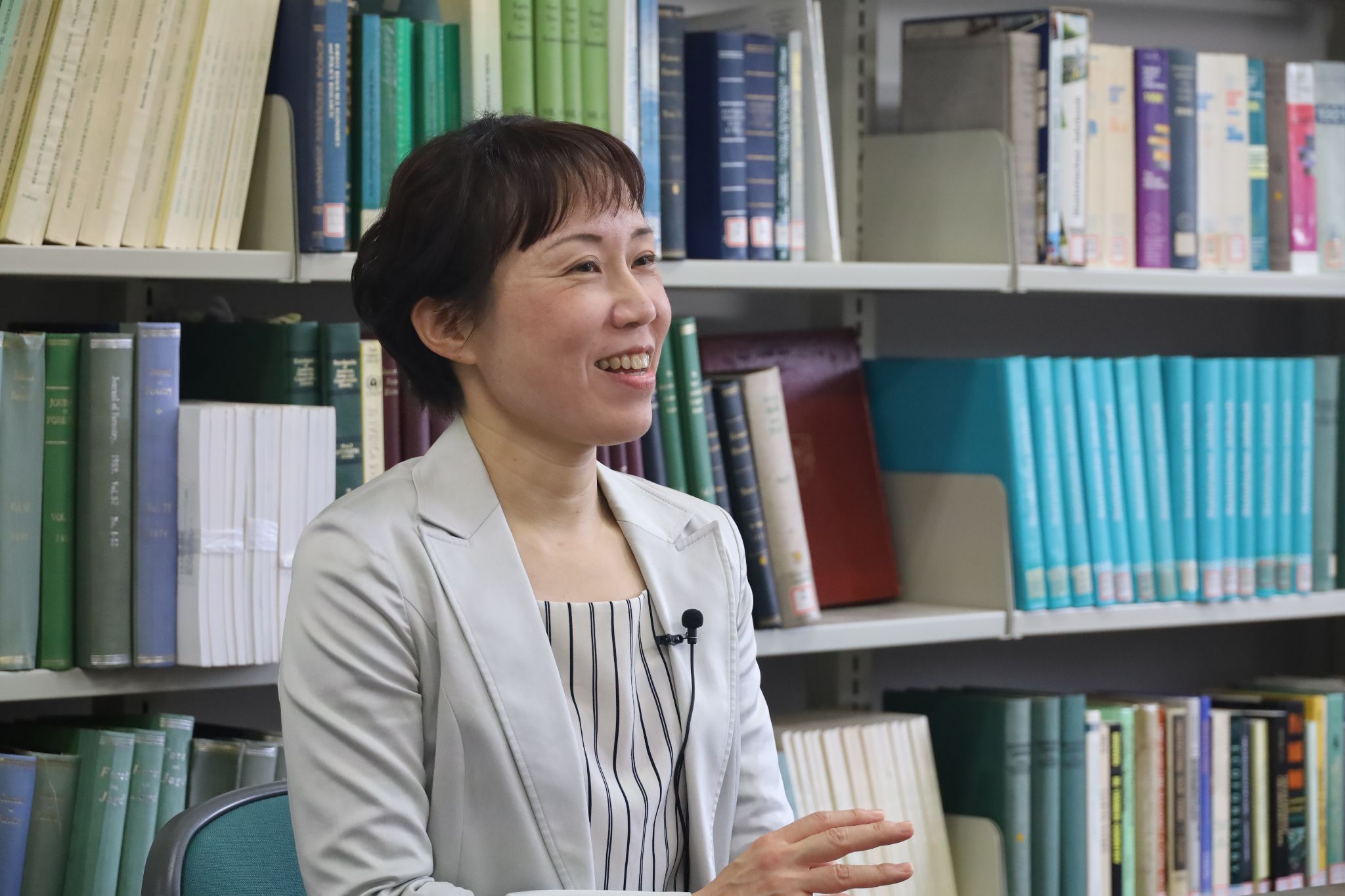Turning natural disasters into blessings
Research Highlight | December 14, 2022
This article first appeared in the special feature Understanding the Impact of Climate Change.
15 questions for climate change researcher Dr. Morimoto (with subtitles).
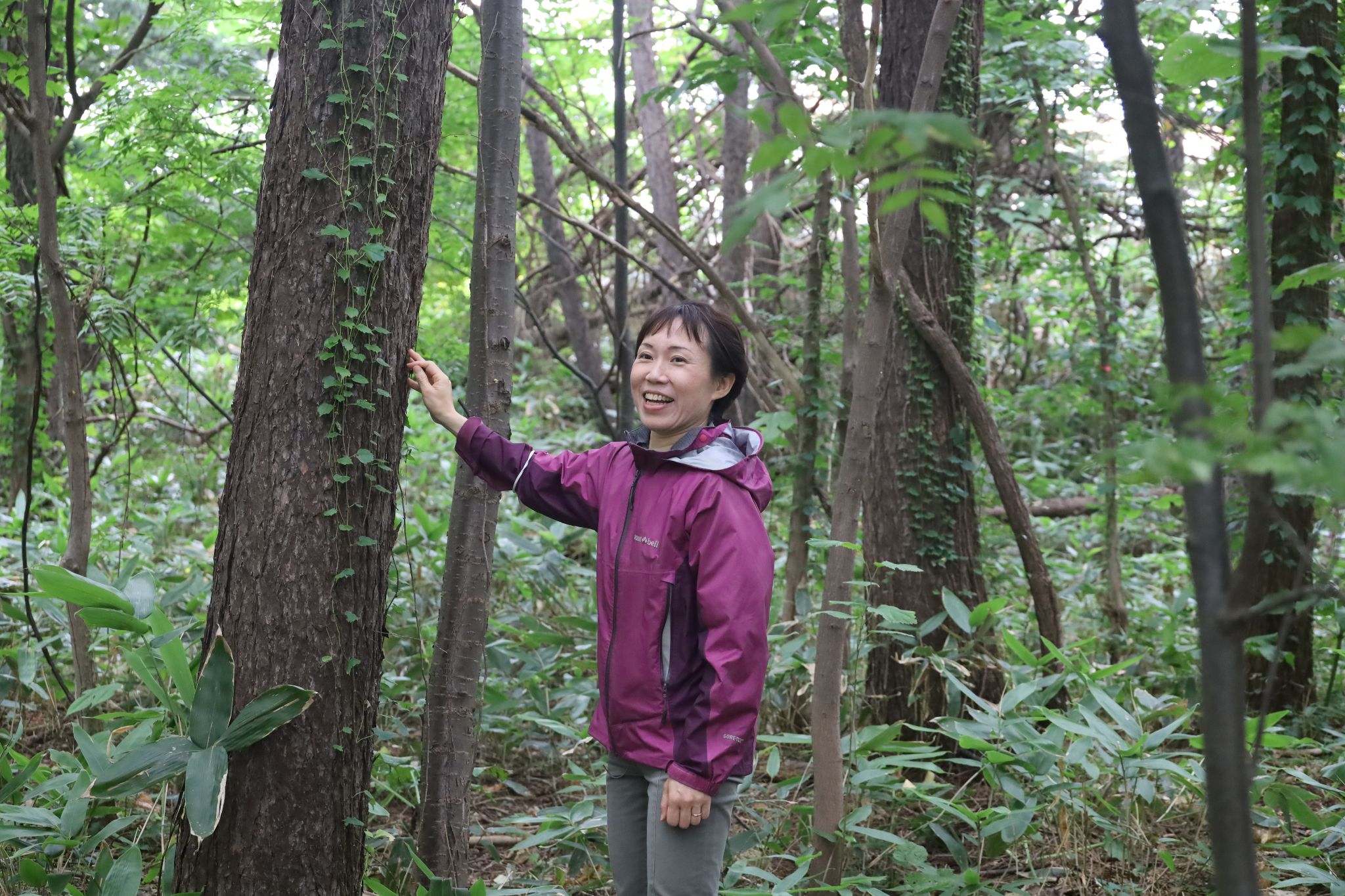
Associate Professor Junko Morimoto
Research Faculty of Agriculture, Hokkaido University
At the Sapporo Experimental Forest (Photo by Aprilia Agatha Gunawan)
Due to global climate change, typhoons, floods, wildfires, and other natural disasters are becoming increasingly severe. Nevertheless, natural disturbances are known to be essential for the renewal and maintenance of forests that bring us blessings, or ecosystem services. We interviewed Associate Professor Junko Morimoto of the Research Faculty of Agriculture to learn how her team is trying to turn disasters into blessings.
Increasing natural disasters
My research focuses on the response of forests to natural disturbances. In recent decades, natural disturbances such as heavy rains, typhoons, and wildfires have been increasing due to climate change. Such disturbances do not always produce bad things only. For example, new seeds fall and sprout on fallen trees, and grow in a bright environment with no overstory. Thus, disturbance is essential for forest regeneration. However, in recent years, as typhoons and heavy rains have become more powerful, damage has been occurring on a scale never seen before. When forests are destroyed and their integrity is lost, secondary disasters such as landslides are more likely to occur. On a global scale, 80% of terrestrial carbon is fixed in forests, so it is very important to maintain forest integrity in order to mitigate global warming.
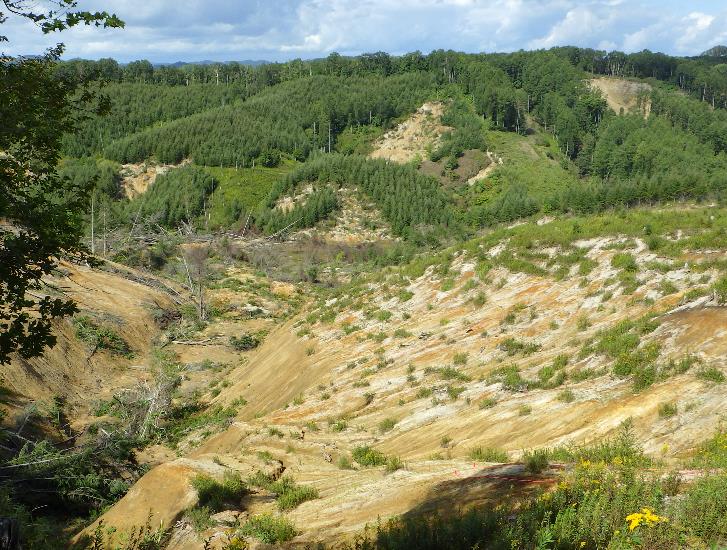
Forests in Atsuma Town after the 2018 Hokkaido Eastern Iburi Earthquake. The forest collapsed extensively due to surface landslides caused by the earthquake. (Photo by Junko Morimoto)
Assessing the risk of tree damage and developing countermeasures
We actually go into the forests after a typhoon or other disturbance to assess the damage. Not all trees will have fallen; some will remain intact. It is generally known that natural forests consisting of a variety of tree species are more resistant to strong winds than planted forests consisting of a single species. This is because a natural forest may contain species that are more resistant to strong winds; whereas, in an artificial forest, all trees will fall at once under the same conditions.
In our research, we are analyzing the relationship between damage and various environmental conditions such as forest structure, topography, soil, wind speed, and rainfall, in order to understand under what conditions trees tend to fall. Such research will enable us to predict under what conditions trees will fall and how much damage they will cause. In fact, our analyses have revealed that trees tend to fall along ridges and on slopes where strong winds blow from the front. Also, we found trees are more likely to fall when precipitation levels are high. Based on these findings, we are suggesting measures such as avoiding afforestation in such areas or afforestation with tree species that are resistant to strong winds.
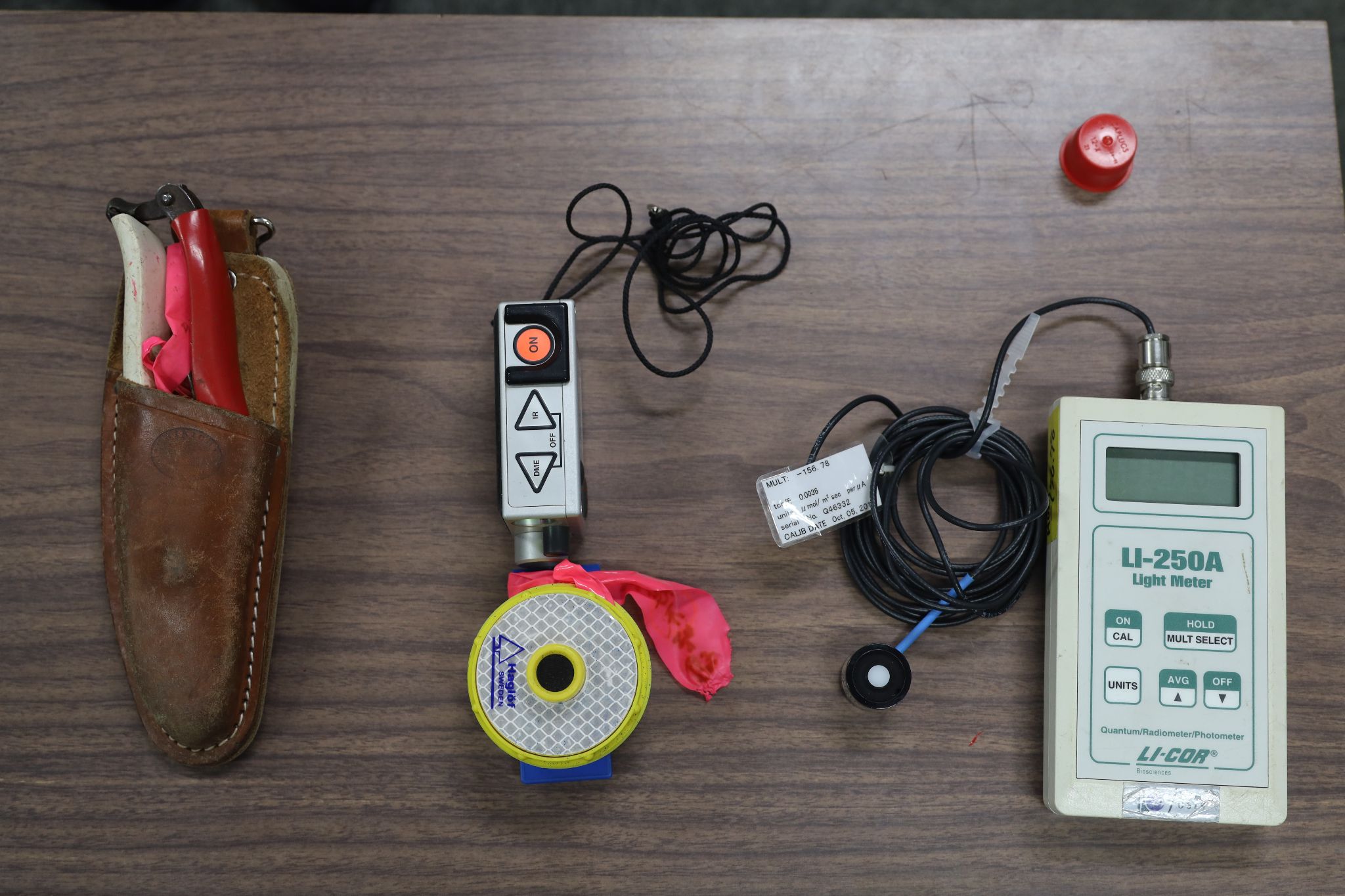
Basic tools for the field survey. From left to right: pruning shears, a tool for measuring tree heights, and a light meter.
Reforestation that takes advantage of nature’s resilience
Another important issue is how to regenerate forests that have collapsed. We are investigating how human intervention in forests can help them regenerate quickly and grow healthily 20 or 50 years later. The key to this is the organisms left behind after natural disturbances, which we call the “biological legacy.” This includes fallen trees, remaining small plant bodies, animals, insects, and fungi.
It is a common practice, after natural disturbances, to clear away fallen trees and other debris in order to revegetate or reforest the area artificially. However, our research shows that this is counterproductive in terms of reforestation. Forests with more biological legacy regenerate faster when they are left as they are without intervention, which is a bit ironic. Even in forests where the upper layer trees have collapsed, small trees remain standing and many seeds and roots remain in the soil. Moreover, the fallen trees protect the seeds from deers and other seed predators, and when decomposed, the trees nourish the forest soil and provide a nursery bed for seeds. Hence, even seemingly useless fallen trees are useful in nurturing the next generation. I believe that in the future, we need to reforest in such a way that we take advantage of the biological legacy and let the forest recover naturally. In fact, we have begun such efforts in the towns of Abira and Atsuma after the 2018 Hokkaido Eastern Iburi Earthquake.
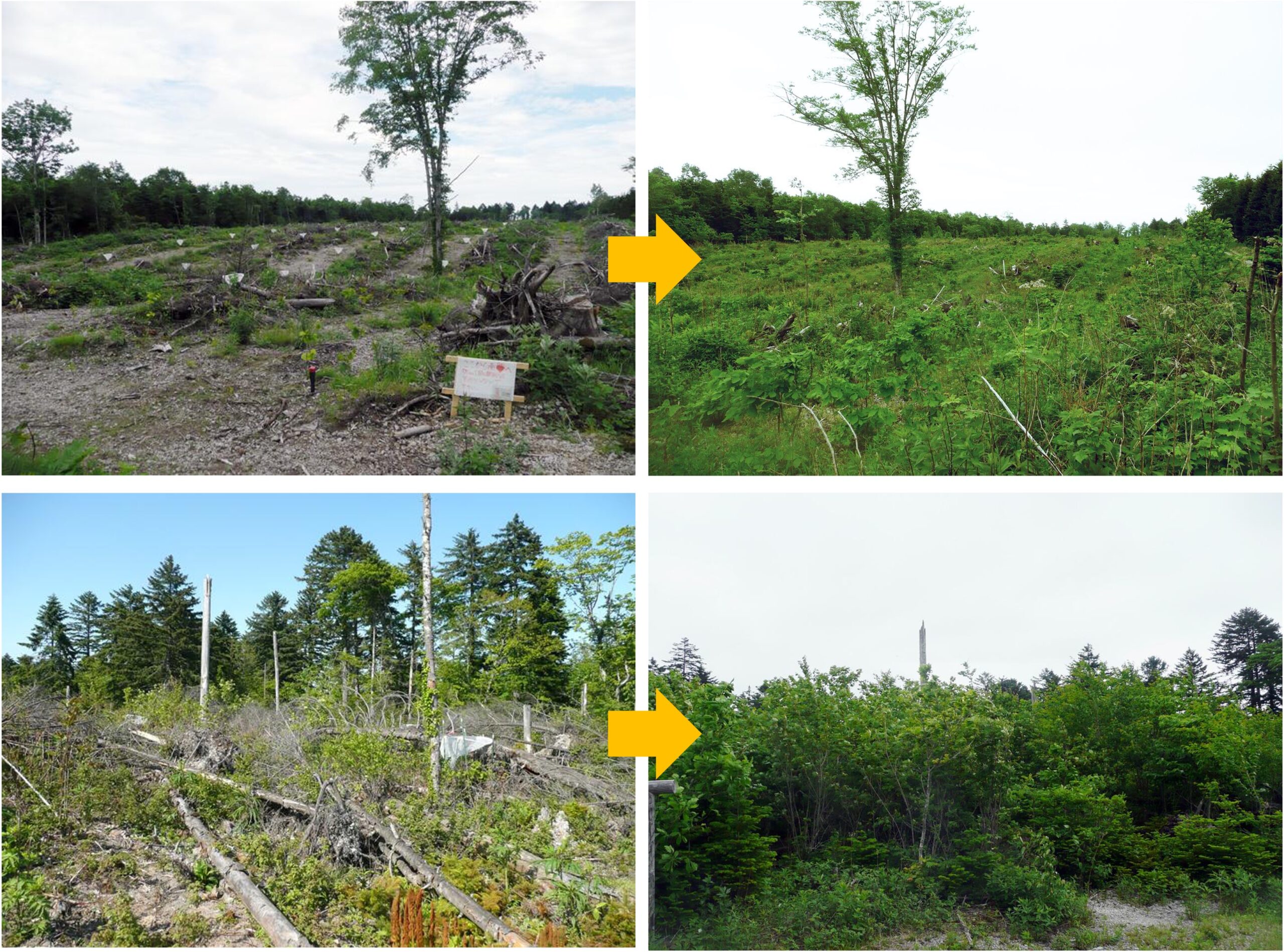
Reforestation after storm damage in a National Forest in Chitose city, Hokkaido. Regeneration was more advanced 15 years later when biological legacy such as fallen trees were left intact (bottom row) than when fallen trees were removed and seedlings were planted (top row). (Photo by Junko Morimoto)
Making time and space your allies
In forest research, we need to consider things over a very long span of time, 30, 50, or 70 years. In that sense, investigating records from the past is very effective — especially aerial photographs. Aerial photographs, which have been taken regularly in various parts of Japan since the end of World War II, can be used to determine the spatial scale of damage and the appearance of forests before and after damage occurred. In addition to this, data taken on the ground at the time the damage occurred and subsequent forest management records may be traced back. Also, we may actually go to the site to find out the forest structure now. Recently, we can use drones to get an overall view of the forest, narrow down the areas to focus on, and then go to specific locations for on-site observation.
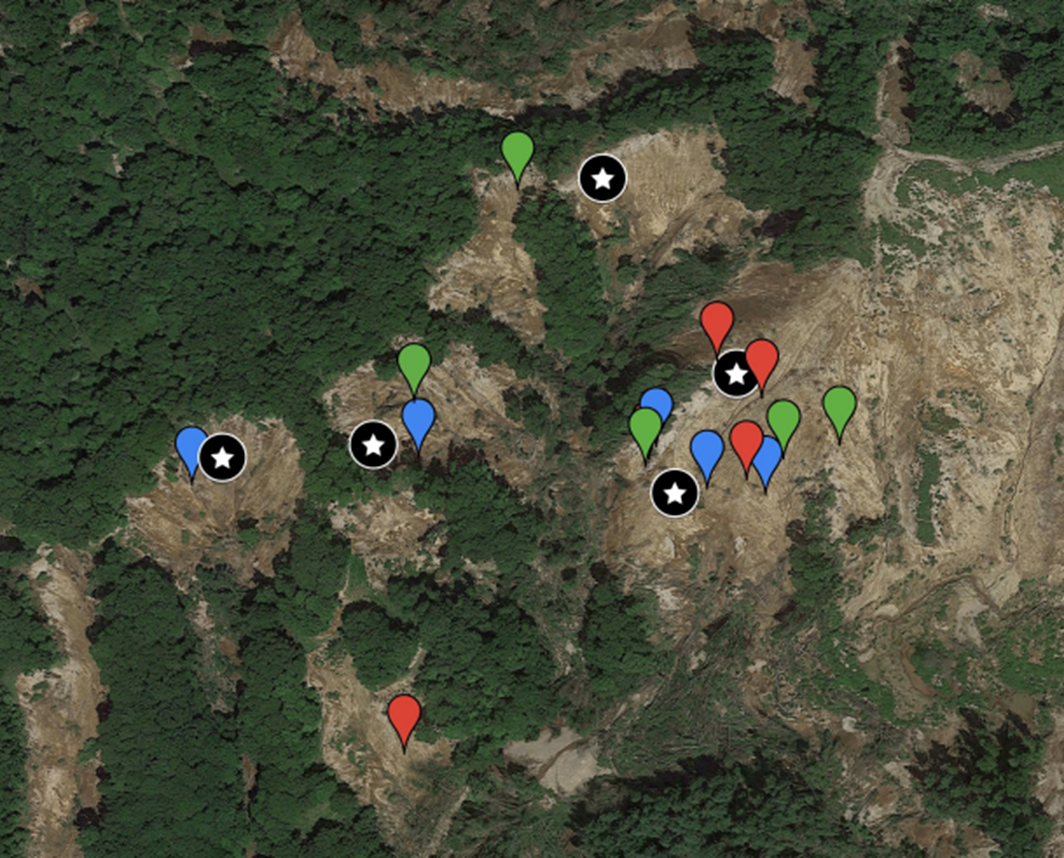
A drone image observing and mapping forest regeneration experiments that use biological legacy after the 2018 Hokkaido Eastern Iburi Earthquake (Image provided by Naho Haraguchi and Flavio Furukawa).
While going back in time, simulation models have also been developed to predict the future. Based on past records, it is possible to some extent to predict how a forest will grow in a given environment. It is also becoming possible to predict how forests will respond to future climate change, such as warmer temperatures and more precipitation.
Typhoon No. 18 in 2004 as a research turning point
I used to study the relationship between humans and satoyama, or village forests — studying human disturbance instead of natural disturbance. As indicated by the phrase “Grandpa went bush-cutting” that appears in old Japanese tales, people used to go into the mountains around their villages to cut bush and firewood and use these materials. So, in satoyama, a unique ecosystem was maintained by human activities; but in recent years, people have stopped using the villedge forests and the ecosystem has changed. I was doing research on how much of the precious satoyama ecosystem was left and how it could be preserved.
However, the direction of my research changed dramatically when I witnessed the damage caused by Typhoon No. 18, which hit Hokkaido in 2004. Forests over a very large area collapsed, causing catastrophic damage. I had never seen an ecosystem destroyed on a large scale before, so it was a great opportunity for me to begin my current research on natural disturbances.
The meaning of conducting forestry research in Hokkaido
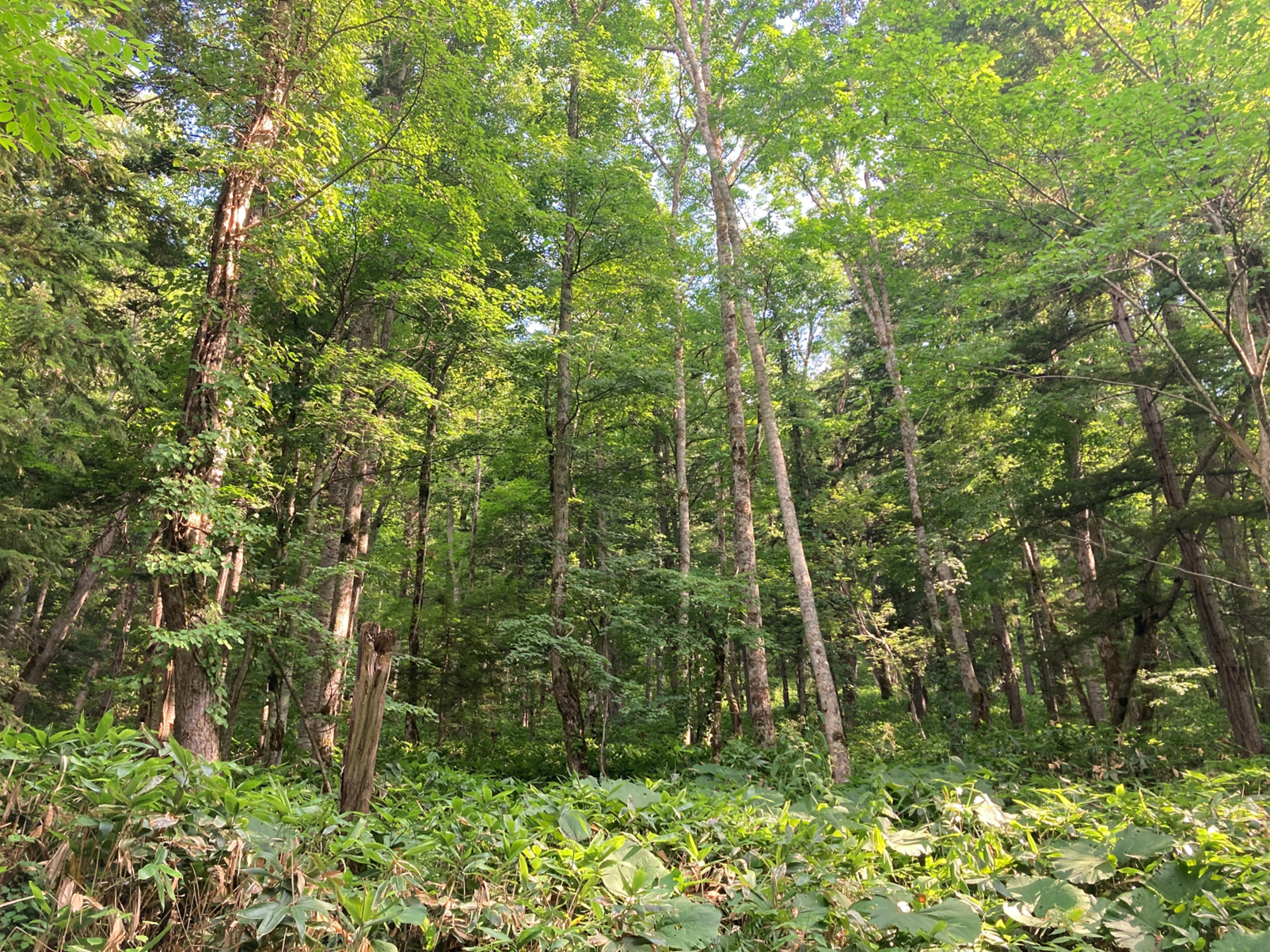
A typical mixed forest of coniferous trees and broad-leaved trees in Hokkaido (Photo by Junko Morimoto)
Hokkaido has a lot of wilderness. A short drive from Hokkaido University’s Sapporo campus takes you to the Taisetsu Mountains. Such proximity to the field is a great advantage. Also, Hokkaido is a large area, and in many cases, forests are left untouched after they have been destroyed due to natural disturbances. So, it is easy to study and compare forests that have been regenerated by human intervention with those that are regenerating naturally, which is another major advantage of doing research in Hokkaido.
Whenever I go out into the field, I always make new discoveries. Even if you think you already know what you are studying, you always make new discoveries, and it is fun because unexpected things happen. On the other hand, there is also the possibility of not being able to reach the research site due to bad weather, or danger of encountering wild animals such as deers or bears. So, while enjoying field surveys, we take safety precautions and alert each other to avoid such dangers.
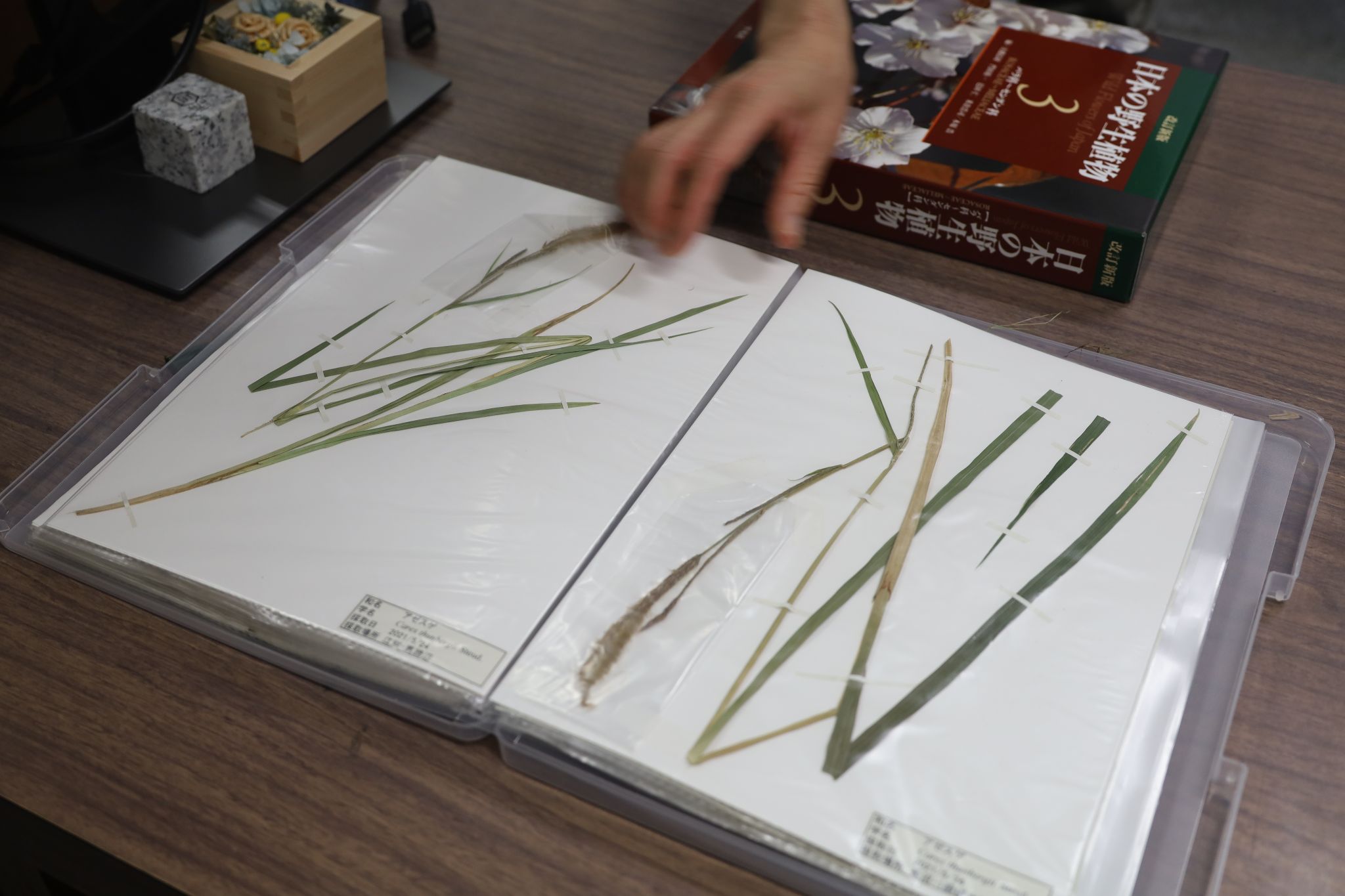
To understand forest ecosystems, not only trees but also understory vegetation are important. Leaves collected during field surveys are used as specimens to identify the species.
Feeling the greatness of nature
When I go out in the field to observe, I find that forests have autonomy. Forests regenerate by themselves, and even if they are damaged, the next generation will grow up again. No human power is needed for this. I feel that while the power of nature is great, the power of humans is very limited. Climate change has become a major concern among people, but if you look at the long history of the Earth, there have been warm and cold periods. There were times when there were no forests at all. Considering this, I feel very lucky to be able to see the forests I see today, whether they are in a destroyed state or old-growth forests.
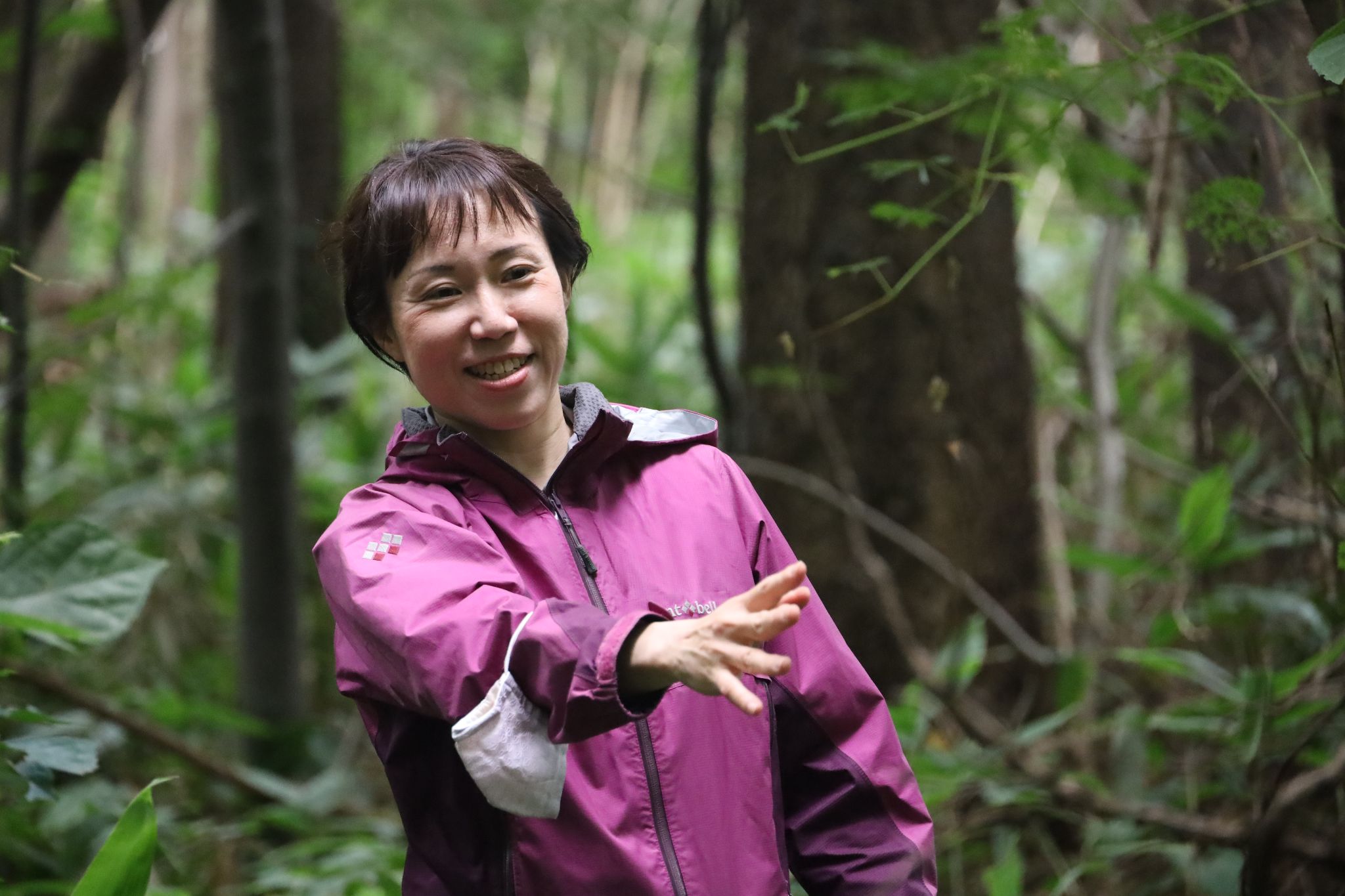
Associate Professor Morimoto explains survey methods at the research forest on the Sapporo campus. (Photo by Aprilia Agatha Gunawan)
Passing on the Forest to the Future
I believe that maintaining robust forests is the foundation for our prosperous life. It is not just for its productive value, such as obtaining timber or foraging for wild vegetables, but also for the healing effect of the forest. Forests are changing, but I believe that any forest will give children a sense of the power of nature and help them grow. In terms of preserving forests, I think it is important not to plant only what you expect to see, but for children and local people to grow together with interest in the nature and forests nearby. The 2018 Hokkaido Eastern Iburi Earthquake caused many forests to collapse due to typhoons and landslides, but we picked up the remaining acorns with children, grew seedlings, and returned them to the areas where the forests collapsed. I hope that over the long term, people in the community will keep their interest in the forest, transcending generations. I also hope to accumulate practical examples and scientific evidence so that I can suggest reforestation using biological legacy as an option for post-disaster ecosystem management.
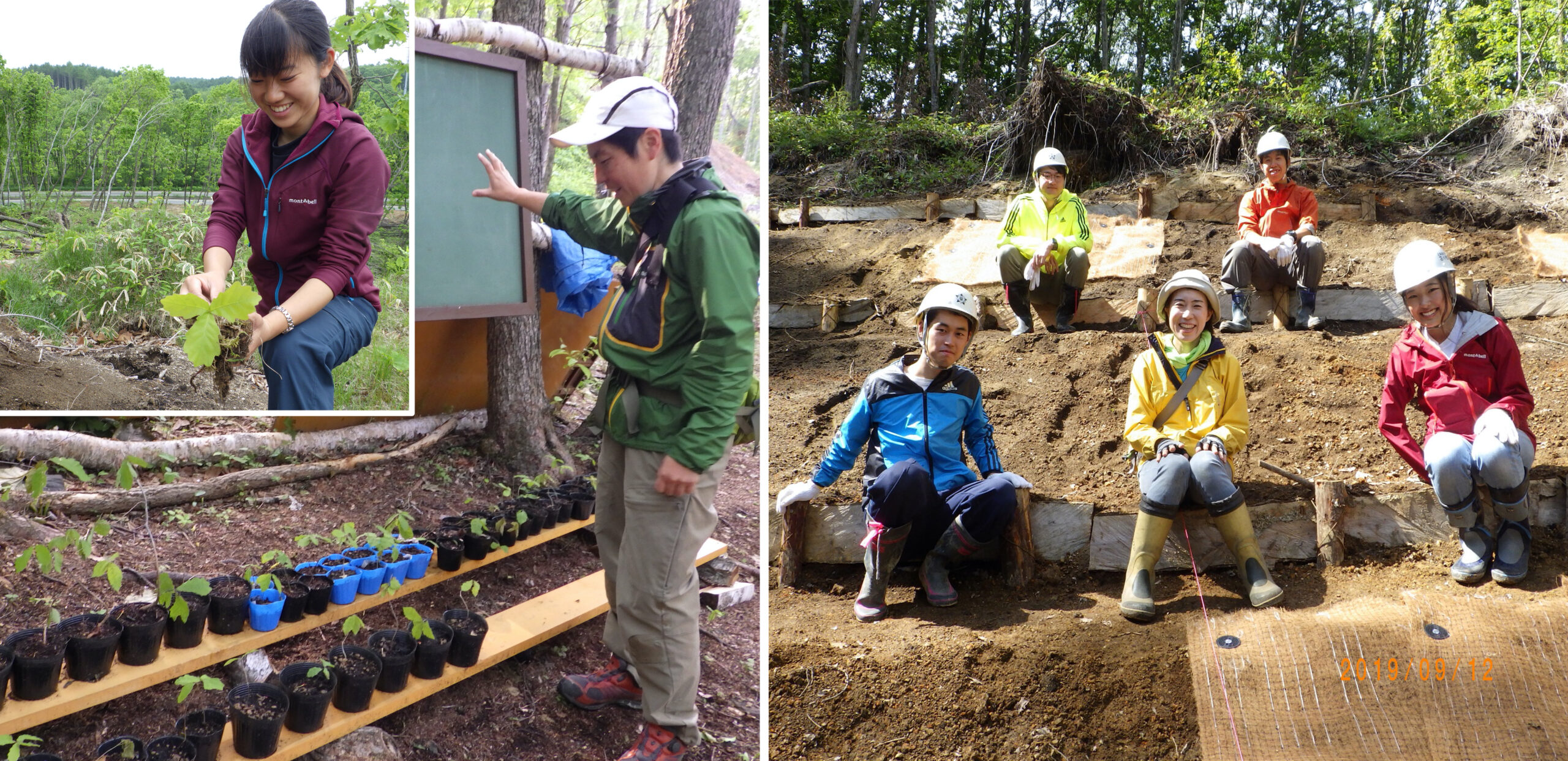
Reforestation activities after the 2018 Hokkaido Eastern Iburi Earthquake. Growing seeds and seedlings to return them to the affected forest (left) and students of the School of Agriculture who worked for the reforestation (right). (Photos by Junko Morimoto)
Memories of KyotoI am from Kyoto and, as a child, I spent a lot of time climbing trees in the nearby mountains. I also liked flowers, so I would spend all-day playing in the mountains, collecting lots of flowers to make pressed flowers and colored water. But when I went there as an adult, I found that the forest had changed a lot. There used to be many pine trees, but now they have been replaced by Castanopsis and Quercus trees. We may think forests are static, but in reality, they are changing dynamically due to disturbances — which is another charm of forests. |
Written by Naoki Namba
Part of the special feature Understanding the Impact of Climate Change

